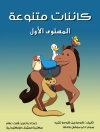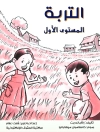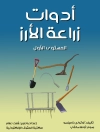The Fables of Æsop, and Others presents a rich tapestry of moral lessons couched in deceptively simple stories featuring anthropomorphic animals and everyday scenarios. Renowned for their brevity and wit, Aesop’s fables employ an allegorical style that engages readers in timeless themes of justice, human behavior, and ethical conduct. The fables draw from a diverse cultural backdrop, reflecting not only the Greco-Roman milieu of Aesop’s time but also an enduring universal appeal that transcends temporal and geographic boundaries. Aesop, a figure shrouded in myth and mystery, is often thought to have lived in ancient Greece around the 6th century BCE. His narratives likely stem from an oral tradition, passing through generations as a means to convey wisdom and moral insights to both the elite and the common folk. Aesop’s own life, marred by servitude and trials, finds expression in his work, suggesting a deep understanding of human struggles and ethical dilemmas. This collection of fables is essential reading not only for those interested in literature and folklore but also for anyone seeking lessons applicable to contemporary life. With its profound moral undertones and charming prose, The Fables of Æsop, and Others remains an indispensable companion in fostering critical thinking and ethical reflection.
About the author
Aesop, a figure shrouded in the mists of history, is traditionally considered a Greek fabulist and storyteller credited with a collection of fables now collectively known as Aesop’s fables. Although his existence remains uncertain and no writings have been unequivocally attributed to him, Aesop is commonly thought to have lived during the 6th century BCE. Numerous accounts suggest he was a slave who gained his freedom through the cleverness that the fables themselves celebrate. Aesop’s literary style is characterized by concise, morally driven narratives that teach ethics and prudence, often employing anthropomorphic animals to drive home human truths. His works, transcribed and translated across centuries, are a cornerstone in the field of children’s literature and moral teaching. ‘The Fables of Æsop, and Others’ encapsulates this vast legacy, presenting an array of stories rich in both entertainment and didactic intent (Aesop, 1858). These fables have been adapted into countless forms and languages, influencing both Eastern and Western literary traditions. While much about Aesop is apocryphal or speculative, the enduring impact of his fables is a testament to the power of storytelling and the human appetite for tales that reveal the complexities of life through simplicity and allegory.












